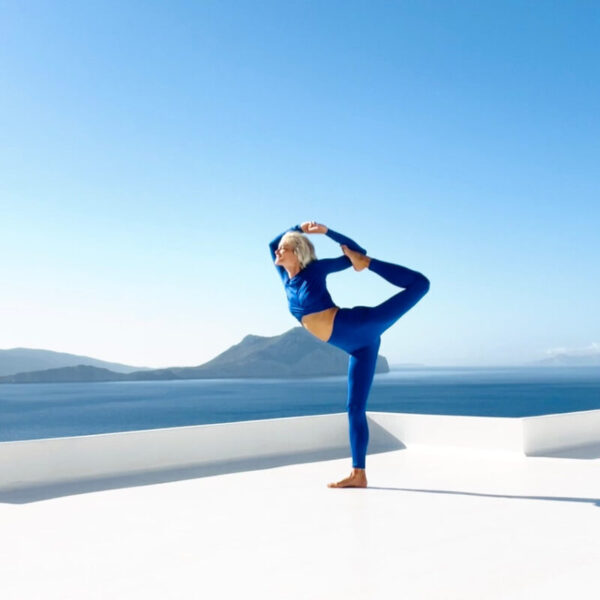Information


Learn about these 5 important aspects to support your asana practice.
On our mat, we encounter pleasant experiences as well as challenges. Both are needed because (in my opinion) although our practice starts on the mat, to fully transform it into a lifestyle, we must learn to take its teachings in our daily life. And life itself is an experience of ups and downs through which we can learn to find a balanced approach. So if the physical postures are the yoga practice you are currently journeying through, then it is important to create a strong, balanced and safe foundation in it.
Let’s look at some key factors to consider on the mat.
Intention or as we know it in Sanskrit “Sankalpa” is the most fundamental building block to our Sadhana (spiritual practice). Remind yourself when you step on your mat of your intention. Sankalpa goes much deeper than just “intention”, but the reason why it is so important to come back to your “why” is to help you keep focused. Another reason is because the ego loves to come on the mat too. And ego guides us into competition and pride, both which are not useful in any yogic practice. Sometimes it is nice to want to reach a particular asana and keep working towards that, but try not to get lost in it. The asana practice is a daily commitment to the connection of our Self with the physical objects of the Self (body and mind). I tell my students often that everything is temporary. Yes, one day you will be able to do most asanas, but maybe another day your body will feel tired, experience muscle stiffness and less strength. But is this really what matters? Will these “accomplishments” make you more compassionate? Will they bring you closer to your Divinity? The answers as well as the practice always unfold beautifully when we practice and live in humbleness.
You may have heard the often quoted phrase “No pain, no gain” which is used in different contexts. But yoga is not one of them. If you ever feel physical pain in your practice, this is your body screaming for help because you are pushing it beyond its capacity in that moment. It is telling you that whatever you are doing is too much and it is hurting the body. This is not following the principle of “ahimsa” (non-harm). There is a fine line between discomfort and pain. Discomfort is bearable, pain is usually not. Especially so for joint or bone pain. If any of these occur, stop immediately and adjust the asana accordingly to suit your current state. Some signs of pain can be: changes of the breath/ difficulty breathing, inability to move/feel stuck, cannot cope with the sensation which is usually quite a sharp and unavoidable one. Please don’t ever put yourself through pain in your asana practice.
In my experience as a yoga teacher, I have come across the belief from many students that flexibility is a requirement of asana practice; and a highly desired one. But this is not so. Flexibility comes with practice, and so does strength. Both are just as important and connected.
Often I see students focusing only on developing flexibility of certain areas in the body to be able to do an asana. It’s important to understand that when developing flexibility, we must also focus on developing strength; and vice-versa. If you focus solely on flexibility practices, then the muscles will become exhausted and injury can happen. Hatha yoga is about balance of the dual energies, masculine and feminine (Pingala and Ida nadis), the prana and the mind and this means active and passive together, strength and flexibility, power and softness combined.

This takes me to the next aspect, which is “try to follow a complete practice”. An asana sequence should always follow the approach of what Hatha means, which is balance of the dual energies (as explained above). The only exception are yin yoga and restorative yoga practices, both focusing only on activation of Ida nadi, the feminine energy. Whilst these are wonderful and indeed needed, remember to also develop a consistent balanced practice. So there can be days when the body needs to soften and have a more gentle and passive practice, which are perfect for yin and restorative. These practices may also help when feeling stressed, anxious or when there is a need to take a more therapeutic approach on the mat. But just make sure that on the other days you balance this with active asanas also. A complete practice should have both active and passive asanas. Exception of course is if there is injury in which case body needs to rest and perhaps some very gentle restorative asanas can be done.
BKS Iyengar had a famous saying “The pose begins when you want to leave it”. Every physical body is different and has its own reactions to an asana. Naturally, there will be categories of asanas that we will resist. Sometimes because the body is not ready, and other times because the mind is not open, flexible or ready for this experience yet. But there is a beautiful teaching that comes with this resistance. Definitely don’t force your body to practice an asana all day if you feel resistance to it or pain (remember the above, pain is not ok). But try to stay with it, in a safe space. Try to go beneath the initial sensation of shock and aversion and see why you are not feeling comfortable in it. Is there a need to adjust the asana? Or is your mind telling you to run away from it? Whatever it is, this resistance can teach us acceptance of an energy or physical discomfort we experience. It is there because it comes from a space of ourselves, whether physical, mental or emotional. And when we stay with it (again in a safe space/variation that suits our body’s current state), gradually and with the help of our breath, we begin to naturally experience a connection with it. And this is the beauty of the practice. It makes us stronger, not where we already feel strong, but where we need to be strong. It teaches us to soften, not to feel weak but to allow and be open to the experience.